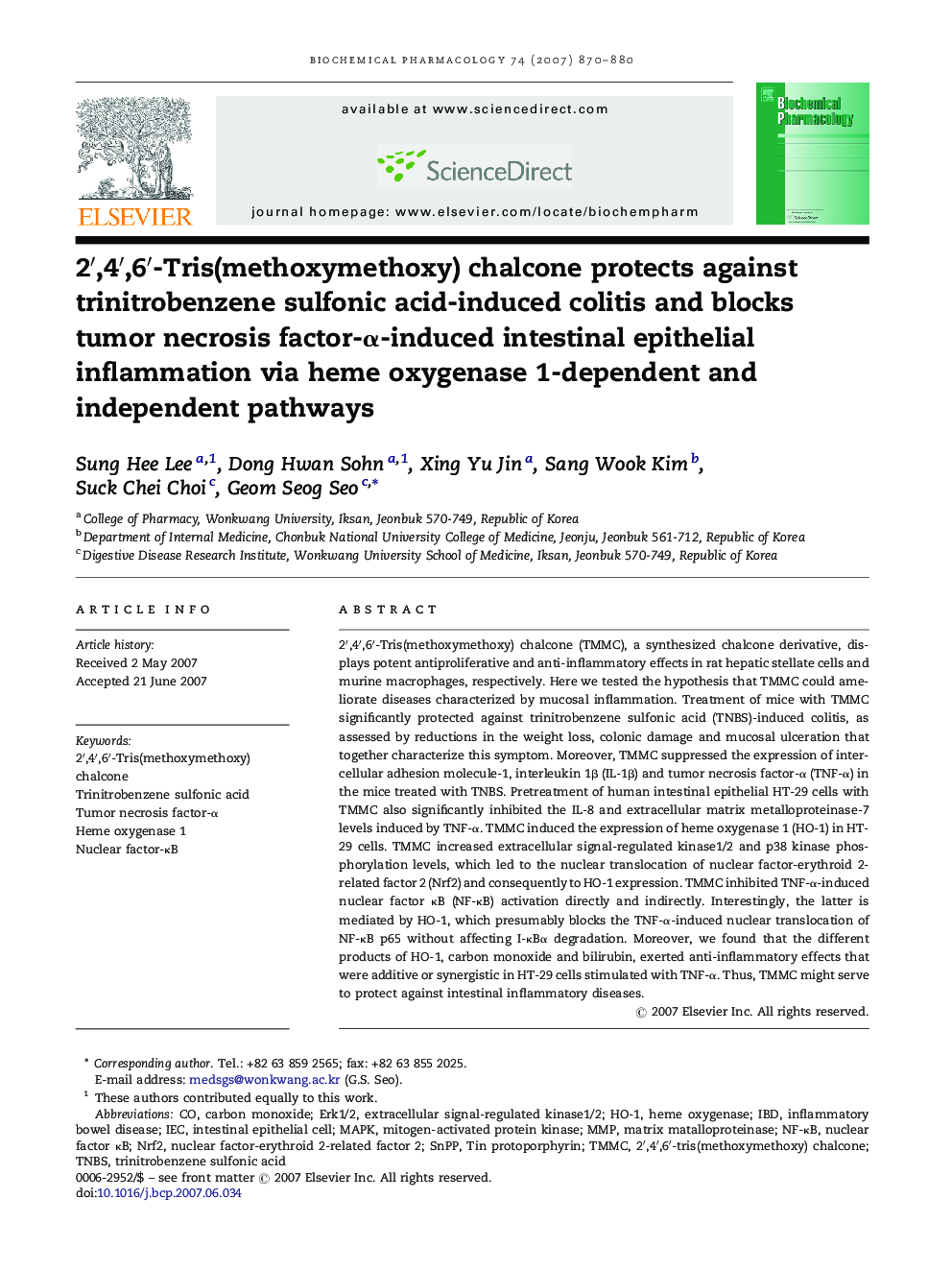| Article ID | Journal | Published Year | Pages | File Type |
|---|---|---|---|---|
| 2514837 | Biochemical Pharmacology | 2007 | 11 Pages |
2′,4′,6′-Tris(methoxymethoxy) chalcone (TMMC), a synthesized chalcone derivative, displays potent antiproliferative and anti-inflammatory effects in rat hepatic stellate cells and murine macrophages, respectively. Here we tested the hypothesis that TMMC could ameliorate diseases characterized by mucosal inflammation. Treatment of mice with TMMC significantly protected against trinitrobenzene sulfonic acid (TNBS)-induced colitis, as assessed by reductions in the weight loss, colonic damage and mucosal ulceration that together characterize this symptom. Moreover, TMMC suppressed the expression of intercellular adhesion molecule-1, interleukin 1β (IL-1β) and tumor necrosis factor-α (TNF-α) in the mice treated with TNBS. Pretreatment of human intestinal epithelial HT-29 cells with TMMC also significantly inhibited the IL-8 and extracellular matrix metalloproteinase-7 levels induced by TNF-α. TMMC induced the expression of heme oxygenase 1 (HO-1) in HT-29 cells. TMMC increased extracellular signal-regulated kinase1/2 and p38 kinase phosphorylation levels, which led to the nuclear translocation of nuclear factor-erythroid 2-related factor 2 (Nrf2) and consequently to HO-1 expression. TMMC inhibited TNF-α-induced nuclear factor κB (NF-κB) activation directly and indirectly. Interestingly, the latter is mediated by HO-1, which presumably blocks the TNF-α-induced nuclear translocation of NF-κB p65 without affecting I-κBα degradation. Moreover, we found that the different products of HO-1, carbon monoxide and bilirubin, exerted anti-inflammatory effects that were additive or synergistic in HT-29 cells stimulated with TNF-α. Thus, TMMC might serve to protect against intestinal inflammatory diseases.
